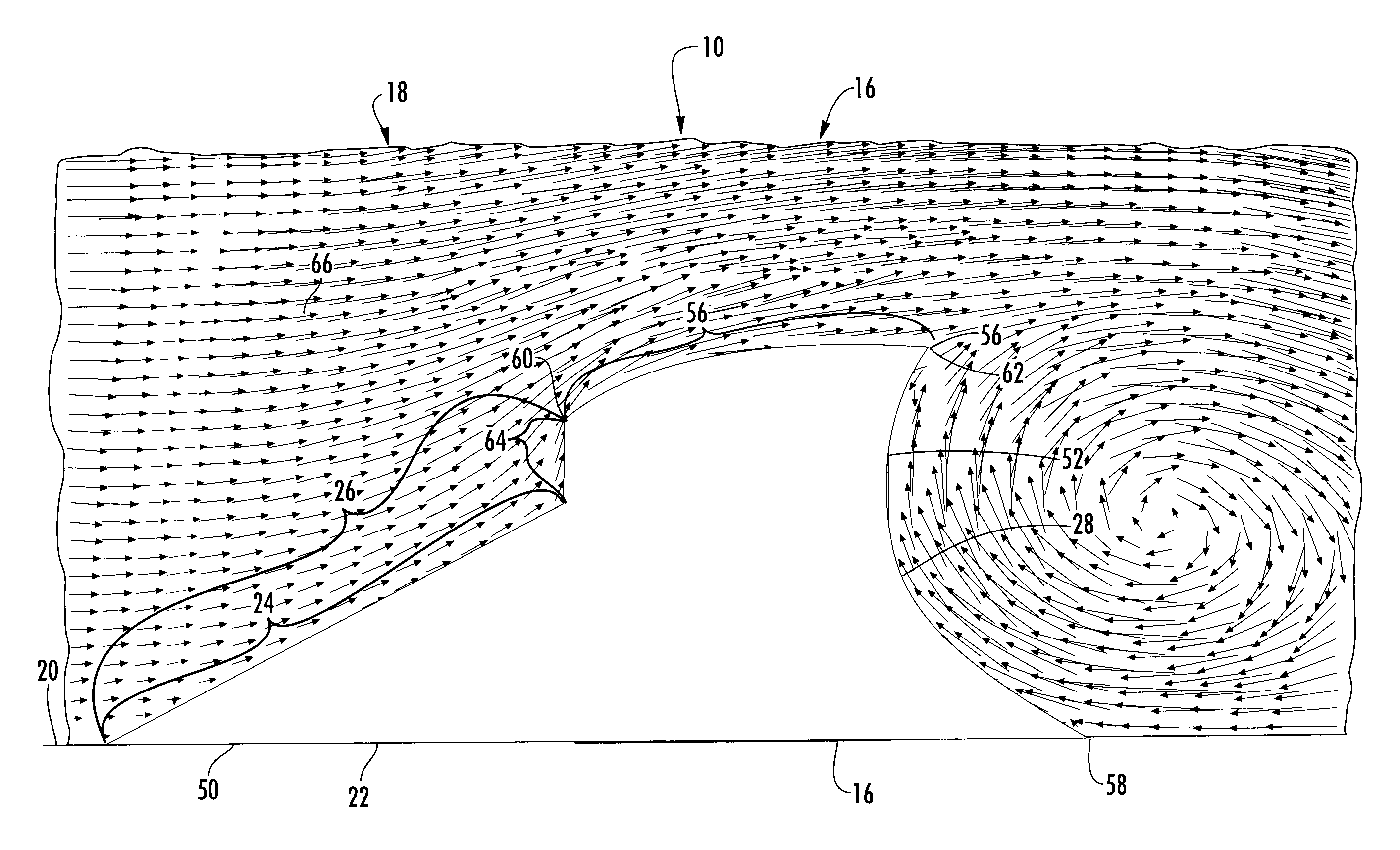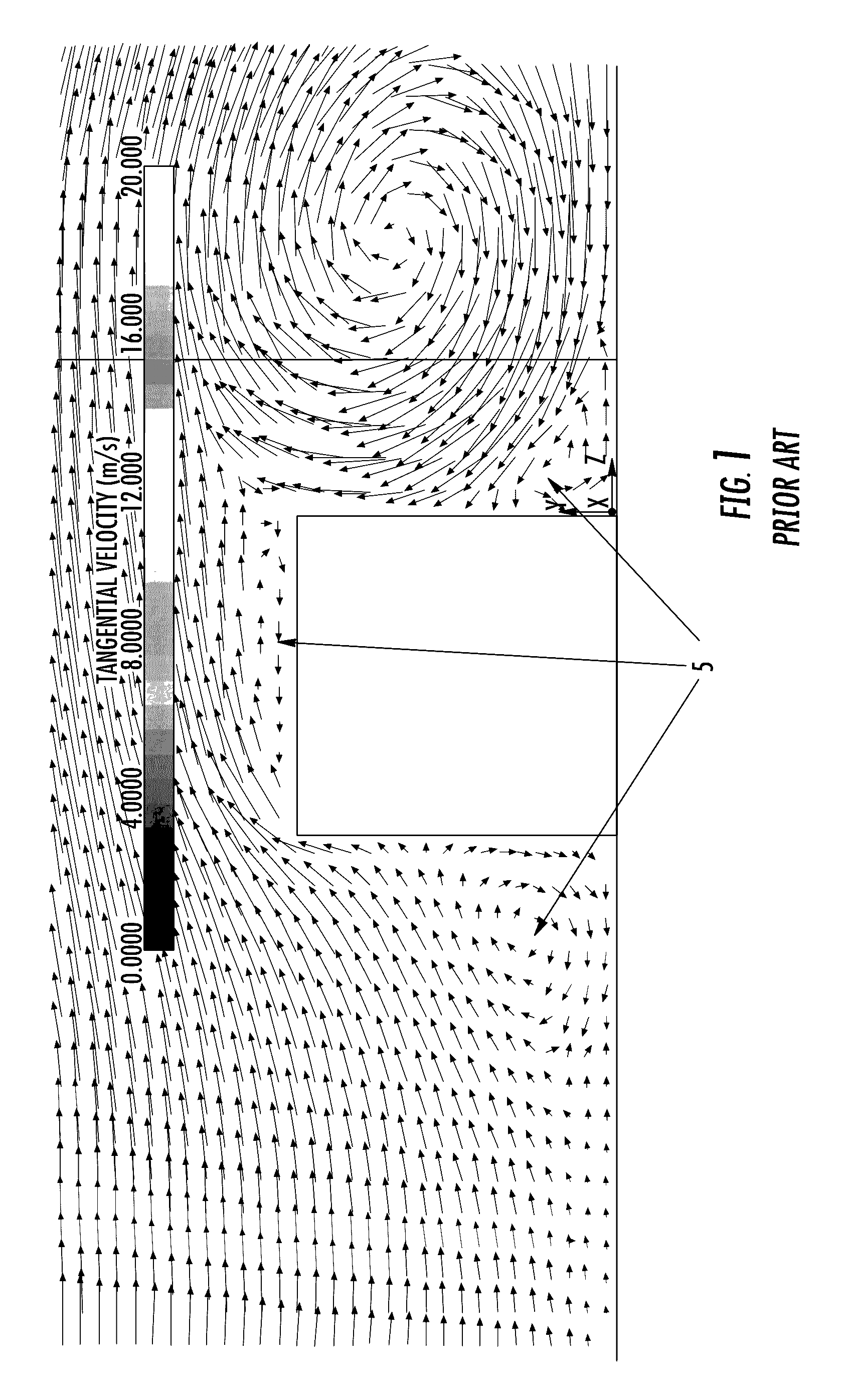Turbine airfoil with an internal cooling system having trip strips with reduced pressure drop
a technology of internal cooling system and trip strip, which is applied in the field of hollow turbine airfoils, can solve the problems of increasing the cooling capacity of the cooling system but having inherent limitations, and the likelihood of failure, and achieves the effects of higher internal convective cooling potential, higher velocity, and higher heat transfer
- Summary
- Abstract
- Description
- Claims
- Application Information
AI Technical Summary
Benefits of technology
Problems solved by technology
Method used
Image
Examples
Embodiment Construction
[0016]As shown in FIGS. 2-5, a turbine airfoil 10 usable in a turbine engine 12 and having at least one cooling system 14 with an efficient trip strip 16 is disclosed. At least a portion of the cooling system 14 may include one or more cooling channels 18 having one or more trip strips 16 protruding from an inner surface 20 forming the cooling channel 18, as shown in FIGS. 3 and 4. The trip strip 16 may have improved operating characteristics including enhanced heat transfer capabilities and a substantial reduction in pressure drop typically associated with conventional trip strips. In at least one embodiment, as shown in FIG. 5, the trip strip 16 may have a cross-sectional area 22 with a first section 24 of an upstream surface 26 of the trip strip 16 being positioned nonparallel and nonorthogonal to a surface 20 forming the cooling system channel 18 extending upstream from the trip strip 16 and a concave shaped downstream surface 28 of the trip strip 16 that enables separated flow ...
PUM
 Login to View More
Login to View More Abstract
Description
Claims
Application Information
 Login to View More
Login to View More - R&D
- Intellectual Property
- Life Sciences
- Materials
- Tech Scout
- Unparalleled Data Quality
- Higher Quality Content
- 60% Fewer Hallucinations
Browse by: Latest US Patents, China's latest patents, Technical Efficacy Thesaurus, Application Domain, Technology Topic, Popular Technical Reports.
© 2025 PatSnap. All rights reserved.Legal|Privacy policy|Modern Slavery Act Transparency Statement|Sitemap|About US| Contact US: help@patsnap.com



